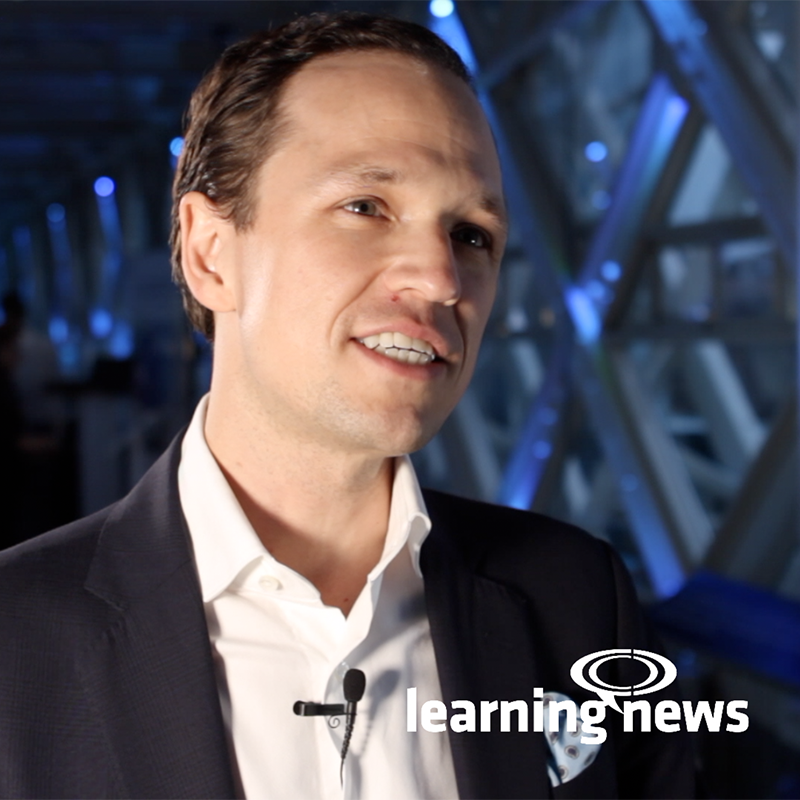
Headspring Launches New Brand with Event in London's Tower Bridge
As a result of rapid expansion and success of a collaboration that set a new standard in the executive development sector, Headspring, the new identity of the joint venture between the Financial Times and IE Business School, was officially launched at an exclusive event held in the walkways of London’s iconic Tower Bridge on 12th June.
Since the organisation’s formation some five years ago, Headspring has been redefining the ethos of executive education. Now officially assuming a new brand and identity, Headspring aims to be a future-focused, client-centric source of inspiration in executive education, constantly challenging the status quo.
While the brand has changed, the organisation maintains that the Financial Times and IE Business School are at the core of its offering. Speaking at the Tower Bridge launch event, Headspring’s CEO, Gustaf Nordbäck, said, “Our goal is to create a new model of executive education that will be useful for the 21st century. That involves change and, to change something, you need to build a new model that fundamentally makes the old model obsolete.
“We chose to announce the new brand at Tower Bridge because, traditionally, a bridge connects things. It’s a symbol that Headspring is connecting an old paradigm about executive education with a new paradigm.
“For organisations that want to grow and be successful in the modern workplace, learning is critical to the future. Learning fuels growth to drive change – so organisations must align their learning strategy with their corporate strategy.
“It’s important that organisations develop a learning mindset – and ingrain learning into the organisation from the bottom up. Doing that will motivate people and drive growth.”
Nordbäck explained, “Headspring isn’t a business school. It’s not a traditional executive education provider. Nor is it a bureau of distinguished journalists.
“Rather, we’re a learning partner which empowers organisations’ people and harnesses change to transform businesses. We provide the diversity of thought that’s needed to overcome today’s business challenges.
“Headspring combines an academic foundation, an inquisitive mindset – driven by FT journalists – and all this is grounded in a real business context.”
Offering his congratulations to Headspring on the brand launch, James Lamont, Managing Editor of the Financial Times, commented, “The word, ‘Headspring’, ably captures the challenge behind executive education.
“Today, we have 60 FT journalists actively participating in Headspring programmes, bringing a unique combination of executive development and journalistic substance to Headspring’s activities.”
The launch event featured a keynote presentation by Ed Fidoe, the Founder of the London Interdisciplinary School and, later, a panel discussion on the implications for the business world of the rise in artificial intelligence (AI) applications. Chaired by Headspring’s Global Head of Learning and Innovation, Liz-Ann Gayle, the panellists were Jessica Brook, Senior People Scientist at Culture Amp; Jonquil Hackenberg, Managing Partner at Infosys’ C-Suite Advisory Practice, and Joanne Peplow, Head of Capgemini’s UK AI Centre of Excellence.
The launch event enabled the 150 or so guests at the launch to experience the serious game, Earth-to-Mars – jointly developed by Headspring and eLearning Studios - which uses Virtual Reality to explore leadership and communications issues.
In addition, Headspring revealed the results of a survey, carried out in partnership with YouGov, into how professionals in Europe and the United Arab Emirates (UAE) understand that AI will affect the workplace. The survey’s key findings are:
- AI is well-known, although in-depth knowledge about it is mixed.
- Humans still prefer to trust humans, not AI, to make decisions.
- AI may be taking some people’s jobs but it will also help people make ‘better’ decisions.
- AI is no better than humans at fostering diversity
- Employees see themselves as better prepared for the effects of AI than are their employers.


